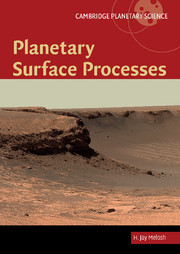11 - Ice
Published online by Cambridge University Press: 05 June 2012
Summary
My theory of glacier motion then is this – A glacier is an imperfect fluid, or a viscous body, which is urged down slopes of a certain inclination by the mutual pressure of its parts.
J.D.Forbes, Travels Through the Alps of Savoy, p. 365Scottish physicist J. D. Forbes (1809–1868) was an inveterate mountaineer, observer, and scientific quarreler. His direct observations of glacier flow led him to describe glaciers as highly viscous fluids, a conclusion that could not be reconciled with the mechanical understanding of his day. He spent many years ferociously defending his view against the opposing opinions of another mountaineering physicist, John Tyndall (1820–1893), an Irishman who argued that glaciers deform by regelation, a process in which ice melts and refreezes under pressure.
Both Forbes and Tyndall had become fascinated by the mechanics of glacial phenomena at a time when Swiss paleontologist Louis Agassiz (1807–1873) was announcing his deduction that Europe had once been smothered under immense glaciers during a former age of ice. Although Forbes’ views are now accepted as being closer to the truth, a full understanding of how crystalline ice can flow like a viscous fluid was not achieved until the 1950s. Tyndall’s regelation idea still finds a place in glacier mechanics, although it is now relegated to sliding at the base of warm-based glaciers.
- Type
- Chapter
- Information
- Planetary Surface Processes , pp. 434 - 464Publisher: Cambridge University PressPrint publication year: 2011

